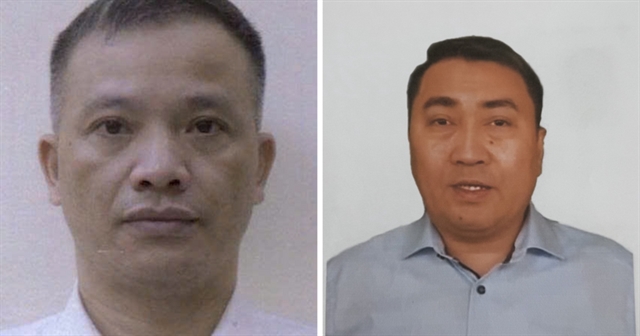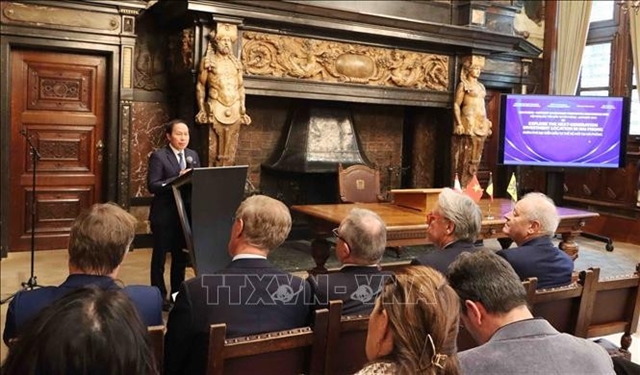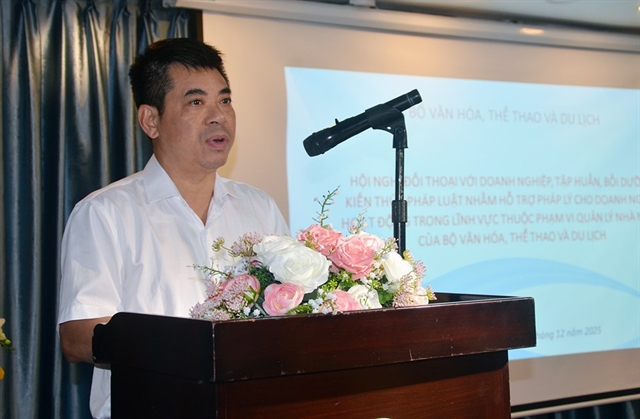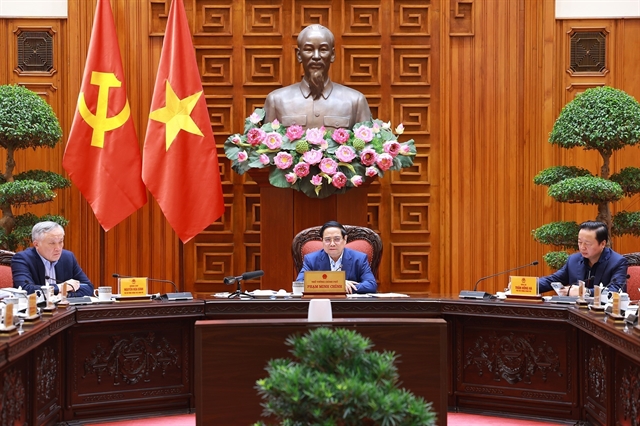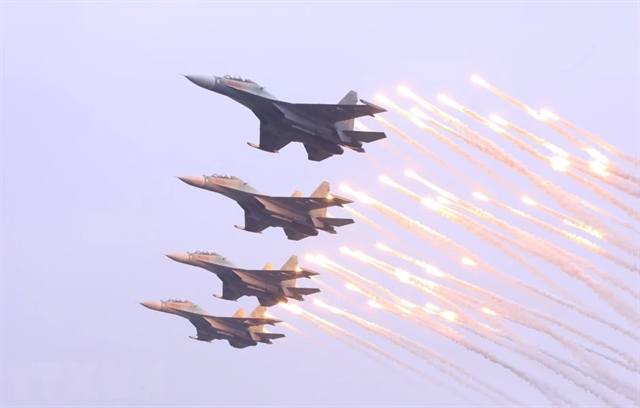 Society
Society

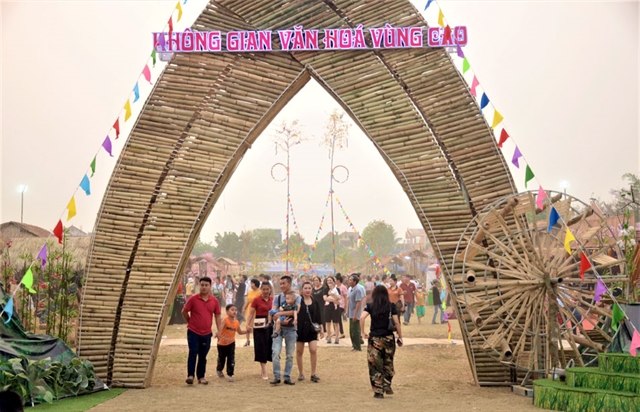 |
| The Mountainous Cultural Space event is set up near General De Castríes Tunnel in Điện Biên Phủ City. Photos of organisers |
ĐIỆN BIÊN PHỦ — Local residents and tourists have been immersing themselves in the lyrics of the traditional music and folk dance of Xòe Thái at the Mountainous Cultural Space event, an activity of National Tourism Year-Điện Biên and the Ban Flower Festival in Điện Biên Province.
Spring is great time to discover and experience the typical customs, habits and cultural values of ethnic minority people along with the mountainous area's stunning beauty.
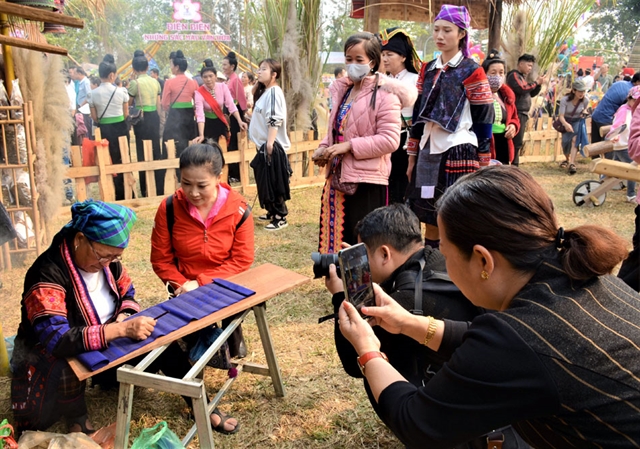 |
| Tourists are interested in learning how to make traditional patterns from beeswax with the Mông ethnic group in Tủa Chùa District. |
There were 11 cultural spaces of districts and towns, and the provincial museum. Each unit focused on a festival of a typical ethnic group. For example, Tủa Chùa District created a space imbued with the Mông people. Tuần Giáo introduced and promoted Kháng culture. Mường Nhé highlighted the Hà Nhì space. Mường Lay attracted tourists with white Thái culture.
Bùi Quang Lợi, a visitor from Thái Bình Province, was excited to learn to drum according to Xòe Thái dance rhythm at the Mường Chà District's cultural space. He then held hands with everyone and joined in the dance. This was the first time Lợi went to Điện Biên and learnt about the culture of the Northwest mountainous people.
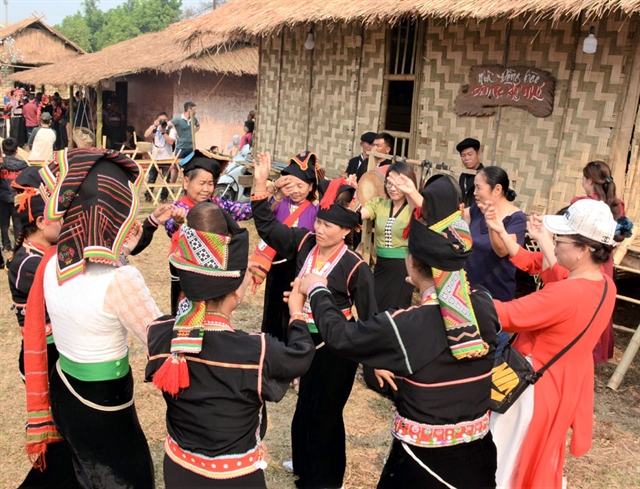 |
| Tourists and artist dance together in the Mường Ẩng District's Khơ Mú ethnic cultural space. |
“The culture of the ethnic groups here is very unique. Each group has its own characteristics, the costumes are beautiful, the musical instruments and dances are also very special," Lợi said.
"Therefore, each group's space is so attractive and inviting that I visit them all to learn and experience everything. Unfortunately, our group's trip is short, and the schedule does not include visits to mountainous districts. However, it was great that we are able to travel to Điện Biên on this special occasion. We have learnt a lot about the cultures of many different ethnic groups," he said.
Mường Ảng District's space was one of the highlights at the event. It was decorated following the culture of the Khơ Mú ethnic group and lures people's attraction with jubilant sounds of drums, gongs, cymbals, and bamboo pipes.
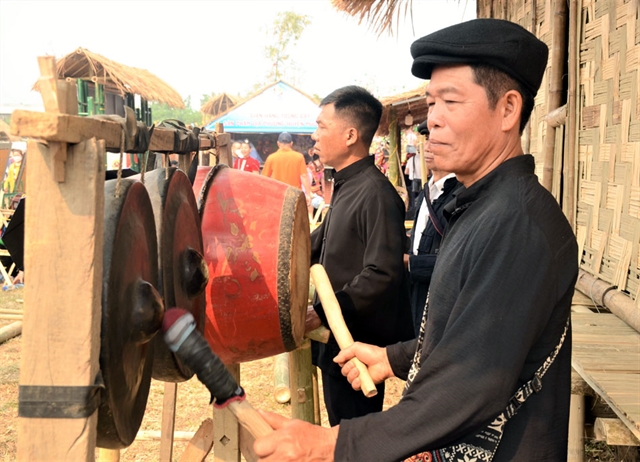 |
| Traditional musical instruments are among the attractions of each cultural space. |
“The Khơ Mú people are one of the four main ethnic groups in Mường Ảng. Coming to this festival, we built a no-front-railing traditional stilt house with one staircase, one main door and two stoves, recreating the entire living space of the Khơ Mú people," said Nguyễn Thị Thanh, director of the district's Centre of Culture, Radio and Television. "Along with that we present a traditional weaving profession that is different from other ethnic groups. Local artisans and troupes are invited here to perform folk songs, dance, and music to attract tourists. In particular, artists play live music on the spot."
 |
| Thai ethnic people of Mường Lay Town bring their unique culture of gong to the festival. |
The meticulous, thoughtful, careful preparation of the organisers created a great place where residents and visitors really enjoy the festive environment and atmosphere, singing together and swinging to the dance.
All district cultural spaces have their own irresistible attraction. This is also the common point of the participating units, recreating the peoples' traditional cultural values, housing models, folk songs, dance, handicrafts, and unique culinary culture in realistic settings.
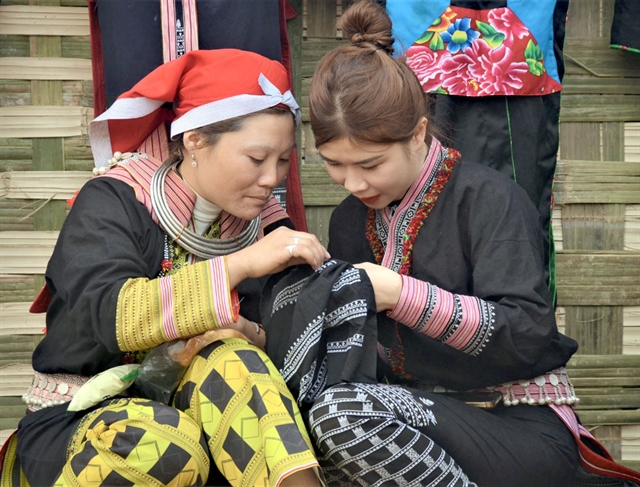 |
| Dao women in Nậm Pồ District practise traditional brocade embroidery. |
The indigenous people played a key role making the festival a great event. They came from remote villages to perform and recreate daily life, while introducing and promoting the beauty of their ethnic culture to guests.
Sùng A Páo, from Sính Phình Commune, Tủa Chùa District, was one of the Mông artisans participating in the festival.
“I and other artists play the flute and dance with the flute. We sometimes perform solo, sometimes in pairs or three," Páo said.
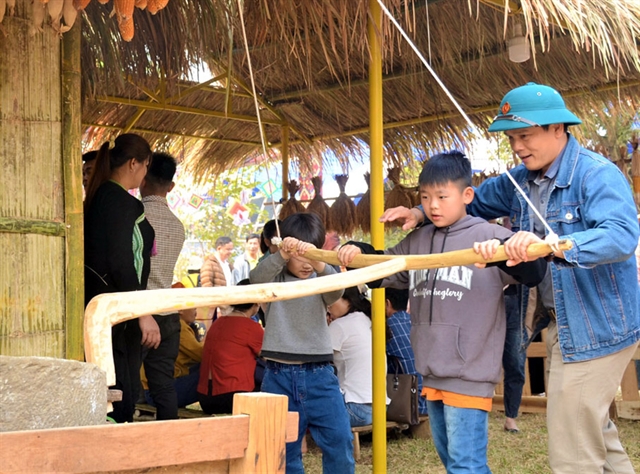 |
| Tourists try a traditional Mông people's corn grinder. |
"I don't remember how many performances I do each day. Even though we are sometimes tired, we are very happy to see many people visiting our cultural space, being interested and curious about the instrument and wanting to hear the sound of the flute. We are always ready to perform."
The mountainous cultural space event, which ran from March 16 to 18, brought rich experiences to visitors, bringing the unique cultural beauty of Điện Biên closer to local and international friends. VNS
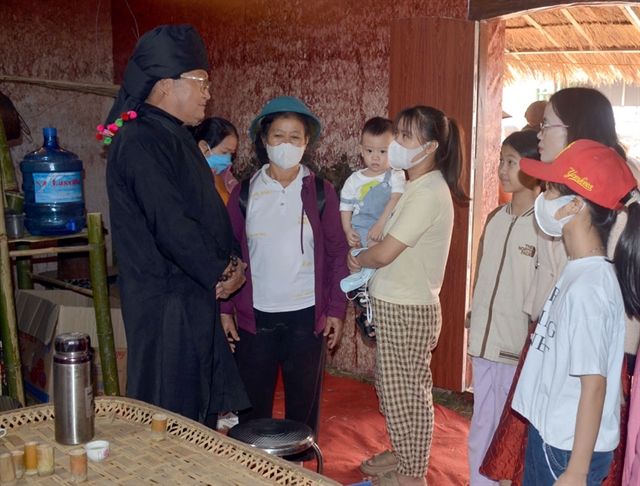 |
| Elite artisan Pờ Dần Sinh introduces visitors to the traditional house space of the Hà Nhì ethnic group who live in Sín Thầu Commune, Mường Nhé District. |
 |
| Lao ethnic women perform their traditional dances to public. |

